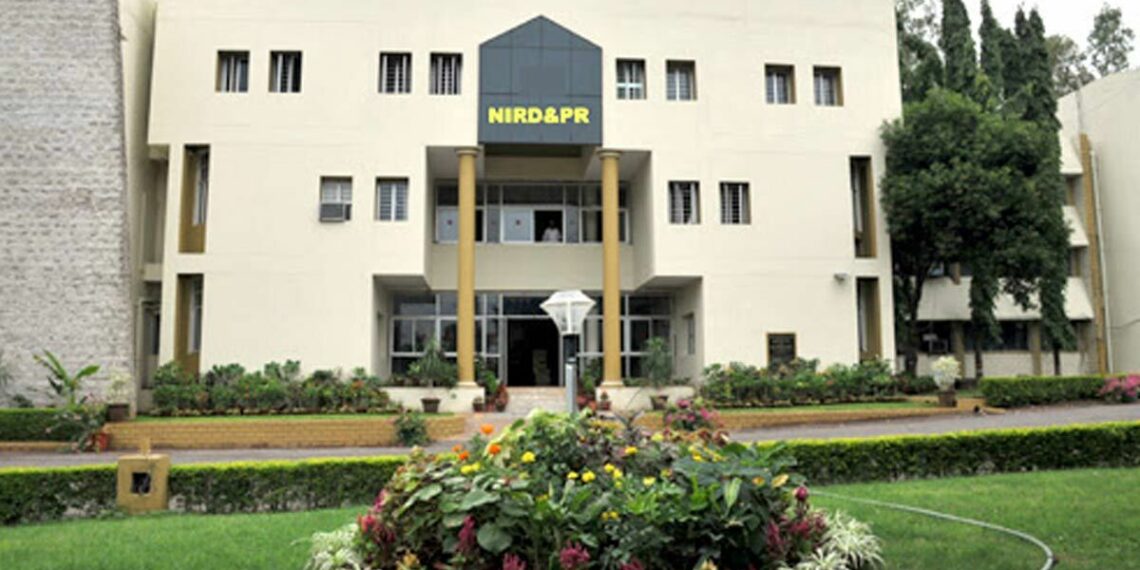By Prof Shankar Chatterjee, Hyderabad
Over seven years ago, I retired as Professor and Head of the Centre for Planning, Monitoring and Evaluation (CPME), India’s premier rural development institutes, widely respected both nationally and internationally for its contributions to rural development.
The Institute is known as the National Institute of Rural Development and Panchayati Raj (NIRD&PR).
The primary activities of NIRD&PR include conducting research on rural development-related issues and providing training to government officers and other stakeholders.
The National Institute of Rural Development and Panchayati Raj (NIRD&PR), an autonomous organisation under the Union Ministry of Rural Development, is a premier national centre of excellence in rural development and Panchayati Raj.
Recognised internationally as one of the UN-ESCAP Centres of Excellence, it builds the capacities of rural development functionaries, elected representatives of PRIs, bankers, NGOs, and other stakeholders through interrelated activities of training, research, and consultancy.
The Institute is situated in the historic city of Hyderabad, Telangana. The NIRD&PR celebrated its Golden Jubilee Year of establishment in 2008.
In addition to the main campus in Hyderabad, this Institute has a North-Eastern Regional Centre in Guwahati, to meet the needs of the Northeast region.
Also, the Council for Advancement of People’s Action and Rural Technology (CAPART) was merged with NIRD &PR from May 1, 2020 and designated as NIRD & PR Delhi Branch.
Following the merger, the activities of Consultancy-cum-Guidance Centre at Vaishali in Bihar have been revived.
The Institute collaborated with international organisations such as the United Nations Development Programme (UNDP), the World Bank, the World Food Programme, the Food and Agriculture Organization (FAO) to promote sustainable rural development as India is a leading and prosperous country in implementation of rural development programmes whether for poverty alleviation, or rural infrastructure creation.
Due to the efforts of NIRD&PR, micro-credit plans (MCP), participatory identification of the poor (PIP), the multi-dimensional Poverty Index, and minimum price support to farmers for their agricultural goods through self-help groups (SHGs), among others, are popular not only across India but also in many foreign countries.
There are altogether 20 Centers functioning in NIRD&PR under different Schools:
1) School of Development Studies & Social Justice,
2) School of Local Governance,
3) School of Public Policy and Good Governance,
4) School of Sustainable Development,
5) School of Rural Livelihoods & Infrastructure,
6) School of Science, Technology and Knowledge Systems and 7) Accountability & Transparency.
Under each school, there are a few Centres, including the Professional Support Centres, which include the following three:
a) Centre for Development Documentation & Communication (CDC),
b) Centre for Information & Communication Technology (CICT) &
c) Centre for Research & Training, Coordination & Networking (CRTCN).
Still, the faculty members have been conducting many rural development programmes in India and abroad.
Additionally, many foreign participants also attended /attending NIRD&PR to undergo training.
The faculty members are highly qualified and experienced. They are from various parts of the country, representing a microcosm of India. Also, faculty members conducted functional research studies across India and consultancy programmes funded by different international organisations.
The Union Budget 2025–26 substantially slashed NIRD&PR’s funding, raising alarm among the Institute’s staff members and all well-wishers for future consequences.
I hope this prestigious Institute will continue to function with its glory under the present Director General, who is a very senior civil service officer (IAS) and an erudite scholar.
(Dr. Shankar Chatterjee is a former Professor & Head (CPME), NIRD & PR, Hyderabad).















